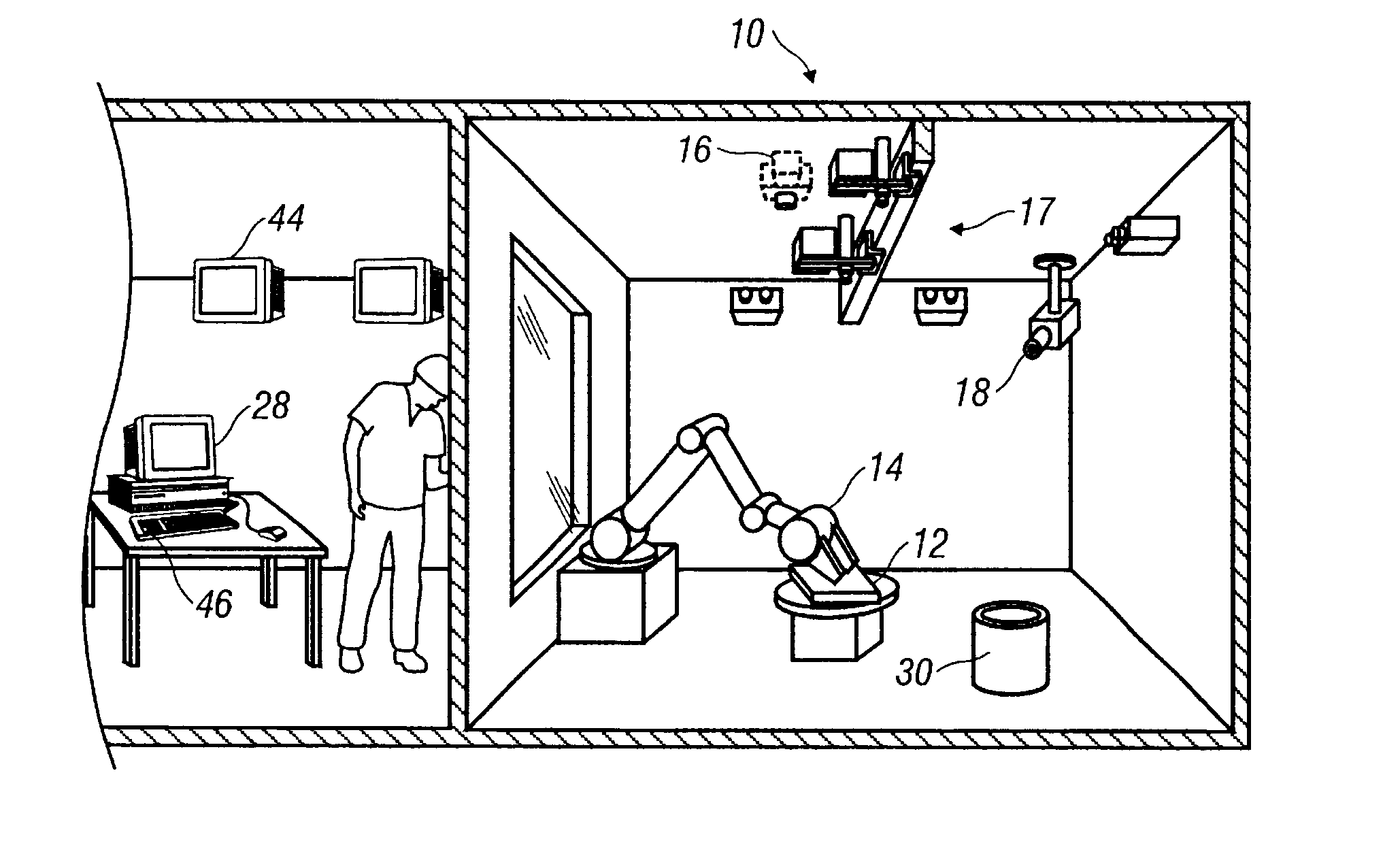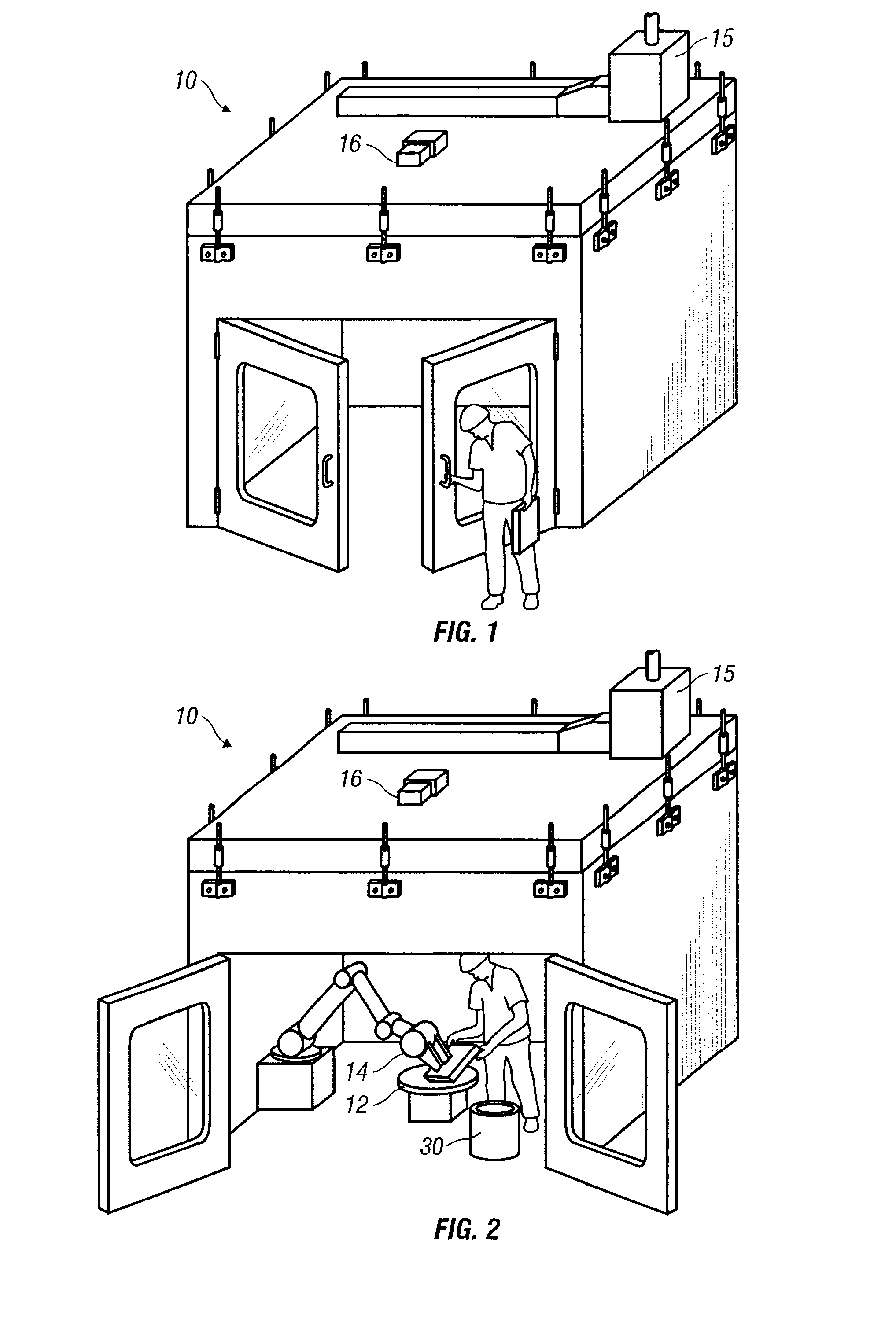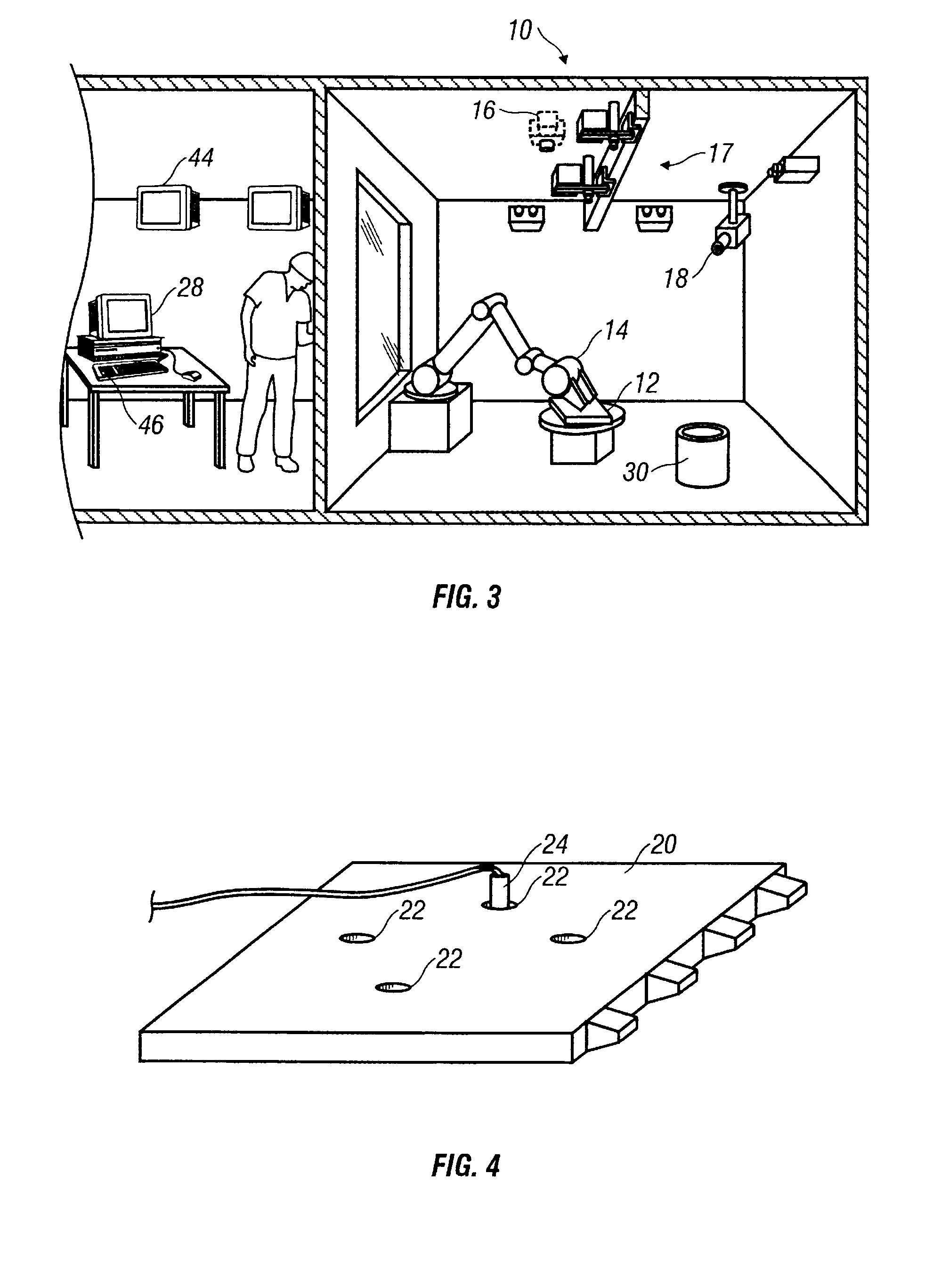Automated spray form cell
a technology of spray form and automatic spraying, which is applied in the direction of coating, manufacturing tools,foundry moulding apparatus, etc., can solve the problems of uncontrolled spray process, significant undesirable effects in finished products, and deflection of finished products in uncontrolled spray processes, so as to minimize or eliminate stress-inducing characteristics, accurate surface temperature distribution measurements, and high sensitivity
- Summary
- Abstract
- Description
- Claims
- Application Information
AI Technical Summary
Benefits of technology
Problems solved by technology
Method used
Image
Examples
Embodiment Construction
As required, detailed embodiments of the present invention are disclosed herein;
however, it is to be understood that the disclosed embodiments are merely exemplary of the invention that may be embodied in various and alternative forms. The figures are not necessarily to scale, some features may be exaggerated or minimized to show details of particular components. Therefore, specific structural and functional details disclosed herein are not to be interpreted as limiting, but merely as a basis for the claims and as a representative basis for teaching one skilled in the art to variously employ the present invention.
As will be described herein and which is illustrated in the accompanying drawings, exemplary trials utilizing the arrangement(s) and method(s) of the present invention have been undertaken. In these trials, an imaging pyrometer was installed in a rapid tooling spray forming facility, a structure that is also commonly referred to as a spray-form cell. An exemplary cell is il...
PUM
| Property | Measurement | Unit |
|---|---|---|
| wavelength | aaaaa | aaaaa |
| wavelength | aaaaa | aaaaa |
| wavelength | aaaaa | aaaaa |
Abstract
Description
Claims
Application Information
 Login to View More
Login to View More - R&D
- Intellectual Property
- Life Sciences
- Materials
- Tech Scout
- Unparalleled Data Quality
- Higher Quality Content
- 60% Fewer Hallucinations
Browse by: Latest US Patents, China's latest patents, Technical Efficacy Thesaurus, Application Domain, Technology Topic, Popular Technical Reports.
© 2025 PatSnap. All rights reserved.Legal|Privacy policy|Modern Slavery Act Transparency Statement|Sitemap|About US| Contact US: help@patsnap.com



